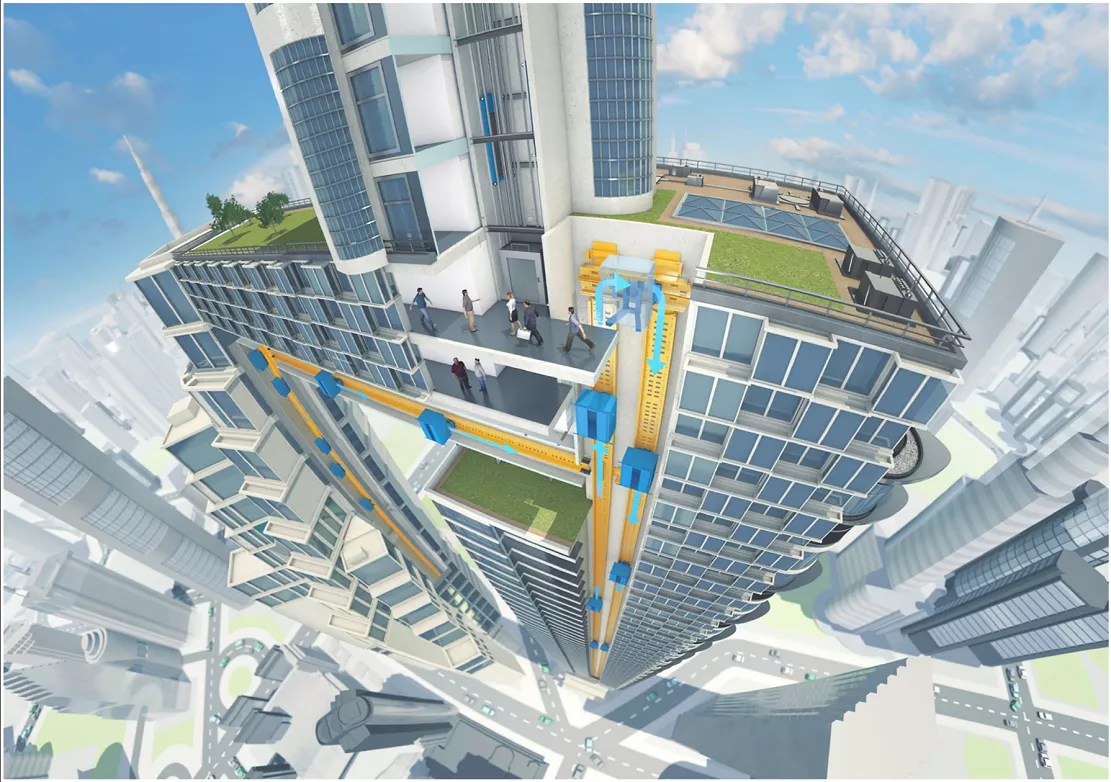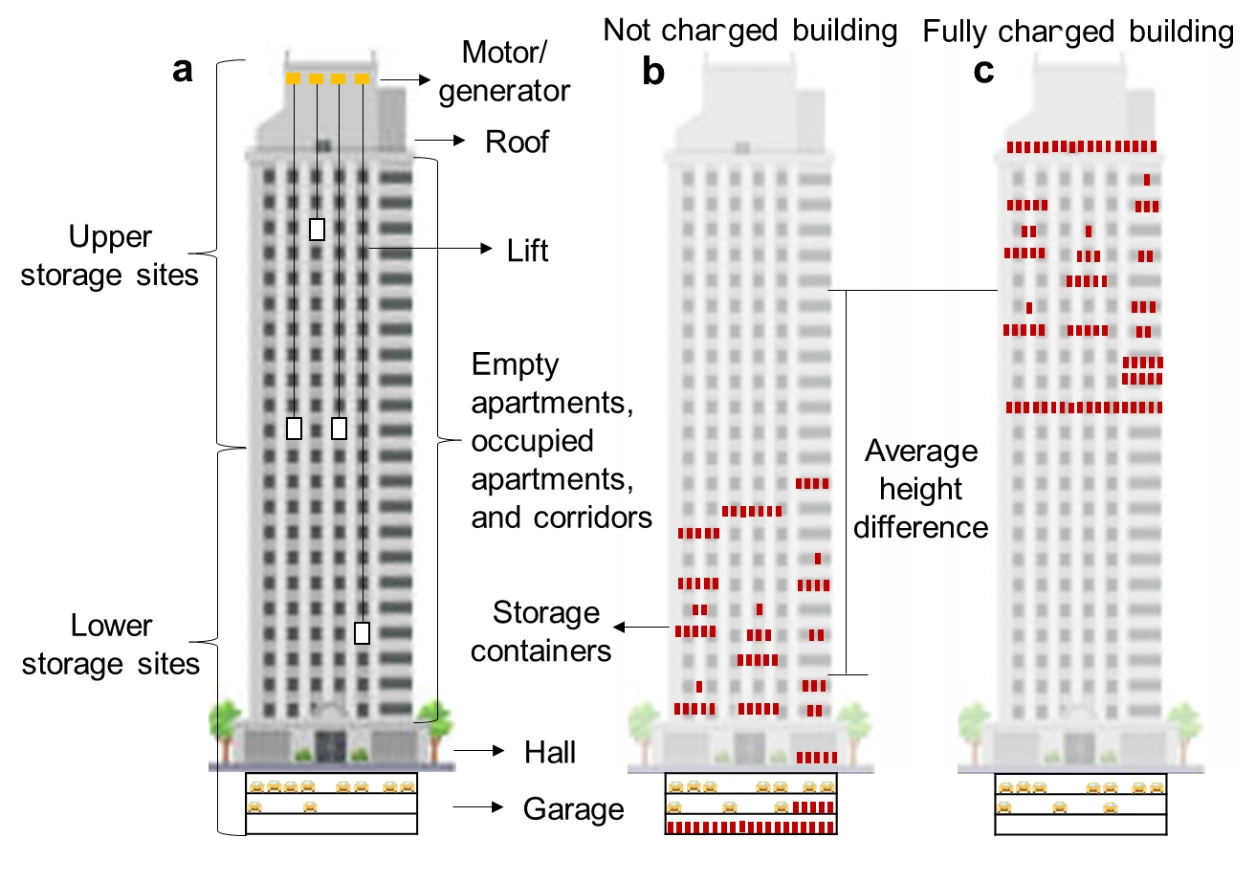Considering that renewable energy is intermittent, energy storage and release will be crucial in the coming decades In this regard, IIASA researchers have proposed a fascinating solution - to turn skyscrapers into huge gravity batteries for very cheap renewable energy storage

The concept is very simple: excess renewable energy can be stored as potential energy and used to lift heavy objects to a higher place. This energy can then be released by using gravity to drive some kind of generator. Researchers from the International Institute for Applied Systems Analysis (IIASA) in Vienna, Austria, observed the height and location of skyscrapers and found that there were a large number of pre built energy stores waiting to be released.
The elevator energy storage system (lest) will utilize existing elevator systems in high-rise buildings. Many of these elevators have been designed with regenerative braking systems, which can collect energy when the elevator descends, so they can be effectively regarded as pre installed power generation devices. Lest will also utilize free space throughout the building, preferably near the top and bottom. Therefore, compared with building a special gravity battery system in other places, it is very cheap to install this capability in buildings.
Basically, when excess renewable energy is available, lest will use any elevator downtime to move heavy objects, such as wet sand in large containers, from the bottom of the building to the top, and from the top to the bottom when the energy can be used or sold back to the grid.
The IIASA team proposed to build a series of autonomous Trailer robots to pick up heavy objects, and carefully pull them into and out of the elevator. They can be stored in the corridor or in an empty apartment or office or may be stored in a dedicated remote space. If the building planning takes this system into account - it is conceivable that the free half floor near the top or bottom of the building can complete this work.
The weight does not need to be heavy enough to prevent people from entering the elevator, and if the passenger enters the elevator and pushes it beyond its weight, the robot can jump out by programming. The algorithm can determine the most appropriate time to move the weight to a high place and when to harvest the stored energy, without turning the elevator system into a nightmare for tenants to wait.

In a study published in energy, researchers said that when the elevator is fully loaded and set to descend at the optimal speed to generate energy, the most advanced intelligent elevator with permanent magnet synchronous gear motor can operate at an efficiency of nearly 92%. If a large amount of energy is needed quickly, the elevator can be set to a faster descent speed, but at the expense of some efficiency - when matched with the wireless, Willie Wonka type magnetic elevator system, the system can become more efficient.
There are many other grid level energy storage technologies under development, but lest has some unique features that make it a place on the table. First, it is deployed in the middle of the cities it serves, using the off the shelf properties of the highest existing infrastructure known to mankind - which greatly reduces capital expenditure, because you only need to move some robots and heavy objects into the hall to play with the elevator program.
It cannot respond to peak demand as quickly or reliably as large battery Projects - but on the other hand, it may be a great way to address some of the weaknesses of large battery systems. A lest can store a ton of energy in summer and gradually release its reserves in winter. The challenge of the future is that the foundation of each building is quite clear.
If the team's predictions hold, then this is a very cheap option. The energy storage cost of lest's installed capacity is estimated to be between us $21 and US $128 per kilowatt hour, mainly depending on the height of the buildings concerned. For comparison, the National Renewable Energy Laboratory estimates that the installed capacity cost of the four hour battery system will be $345 per kilowatt hour in 2020. It predicts that even under the most optimistic assumptions, this figure will not fall below $100 per kilowatt hour before the end of 2040s. This is capital expenditure, not operating expenses, and it also makes a strong argument that this technology should be studied more carefully.
The IIASA team estimates that the current high-rise buildings in the world can be converted into 30 to 300 gigawatt hours of energy storage, and the upper limit will be enough to allow the whole new york city to operate at the current consumption rate for about a month.